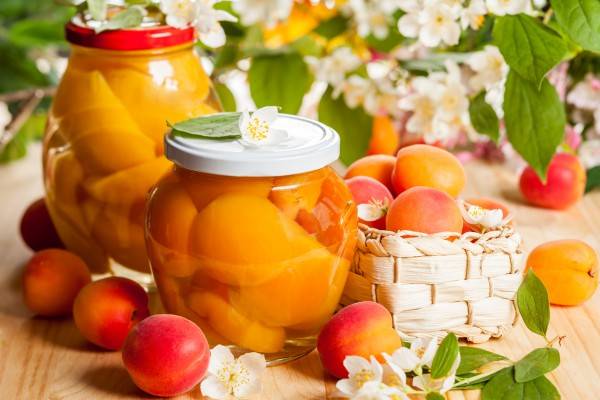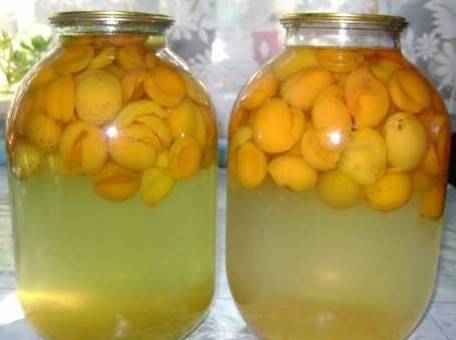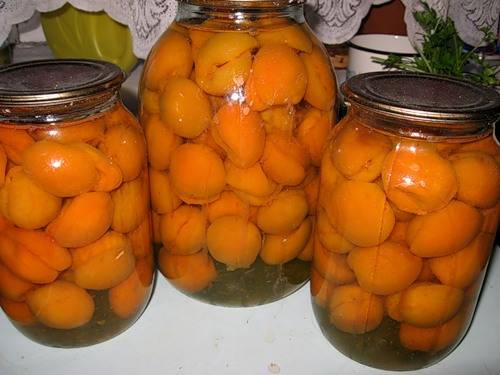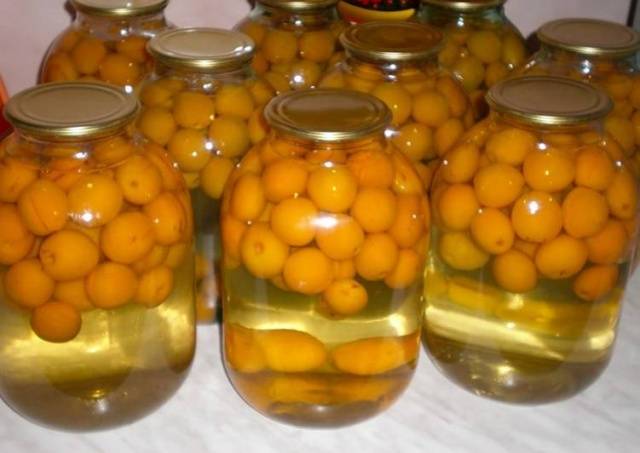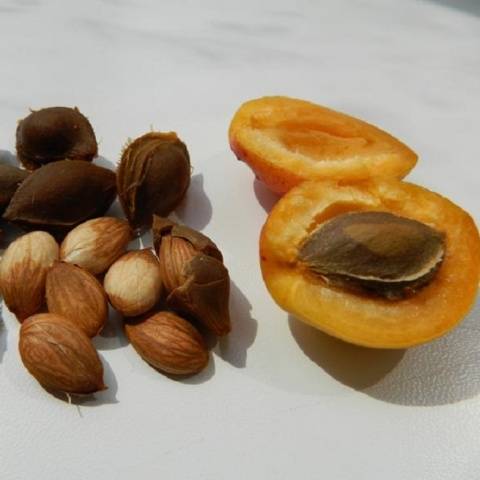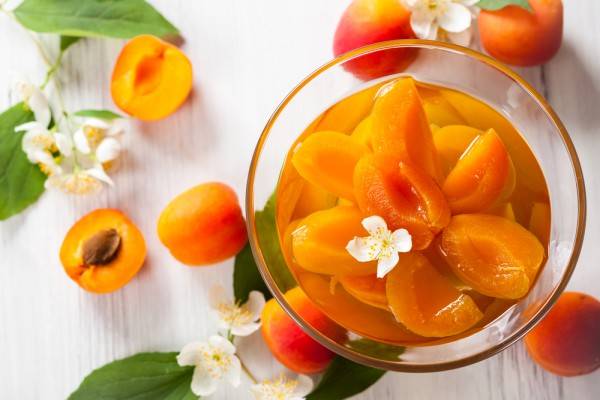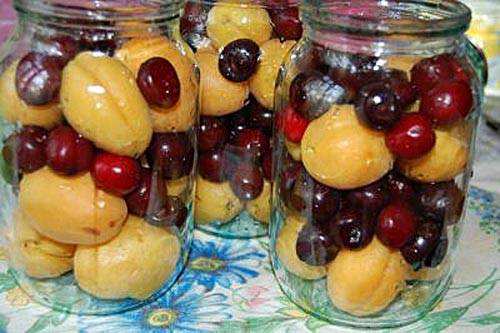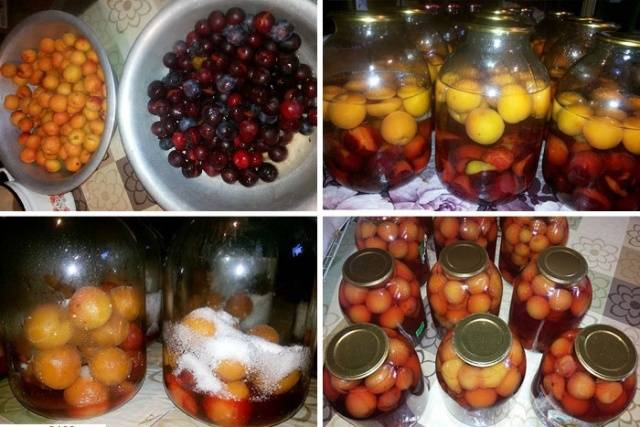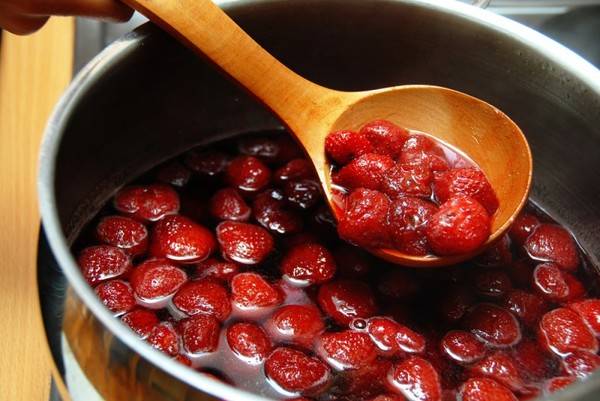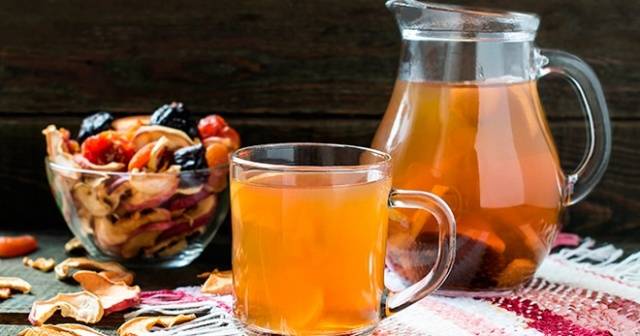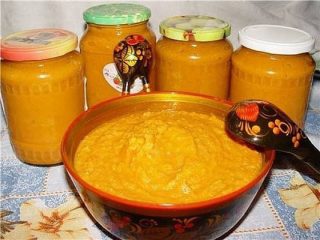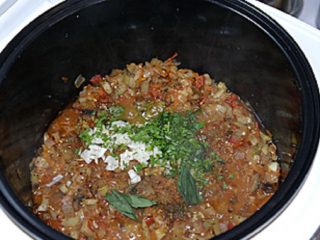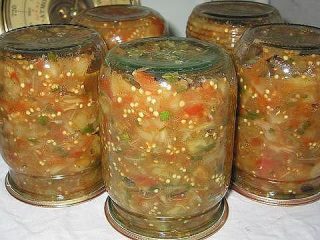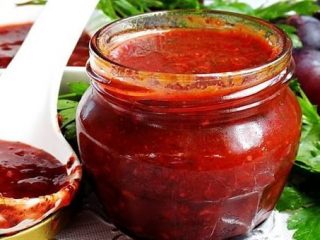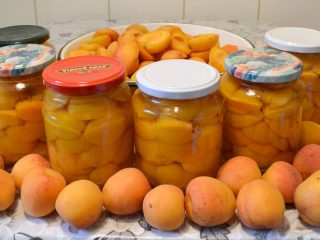Apricot compote for the winter, prepared in summer during the season when fruits can be bought at a very attractive price or even picked up in your own garden, will serve as an excellent alternative to many store-bought juices and drinks.
Cooking tips
One of the features of making apricot compote is the use of ripe, but at the same time dense and not overripe fruits for these purposes. If you want to use unripe fruits for compote, then the drink from them may have a bitter taste. And overripe apricots will surely soften during heat treatment, and the compote will become not very beautiful, cloudy.
Apricot compote for the winter can be prepared from whole fruits, as well as from halves and even slices. But keep in mind that the whole apricot compote should be consumed first of all so that it is not stored for more than a year. With longer storage in the bones, there is an accumulation of a poisonous substance - hydrocyanic acid.
To obtain especially delicate fruits, the apricots are peeled before laying. To make it easier, the fruits are first scalded with boiling water, after which the peel from the apricots comes off quite easily.
The best recipes for apricot compote
The variety of recipes for making apricot compotes for the winter is great - choose to your taste: from the simplest to the most complex with various additives.
Classic half
Our grandmothers used this recipe to make apricot compote.
Prepare:
- 5-6 liters of purified water;
- 2.5 kg of pitted apricots;
- 3 cups granulated sugar;
- 7 g citric acid.
You will also need glass jars of any size, thoroughly washed from dirt and sterilized.
According to this recipe, ready-made compote can be drunk immediately without diluting it with water.
Now you need to boil the syrup with sugar and citric acid, which acts both as an additional preservative and as a taste optimizer. Heat water to a boil, add sugar and citric acid and simmer for about 5-6 minutes. Gently pour the hot syrup over the jars of fruit and place them on sterilization. In hot water, three-liter cans are sterilized for 20 minutes, two-liter - 15, liter - 10 minutes.
After the end of the procedure, the jars are rolled up and left to cool in the room.
From whole apricots without sterilization
To make apricot compote according to this recipe, the fruits need only be thoroughly rinsed and dried. If you count on the components for a three-liter jar, then you need to take from 1.5 to 2 kg of fruit, from 1 to 1.5 liters of water and about 300 grams of sugar.
Fill the jar with apricots and pour boiling water almost up to the neck. After 1-2 minutes, pour the water into a saucepan, add sugar there and heat to 100 ° C, boil for 5-7 minutes.
Pour the apricots again with hot syrup and sugar and leave for 10-15 minutes. Then the syrup is carefully drained and brought to a boil again. After the third pouring of hot syrup into the fruit, they are immediately hermetically sealed and cooled.
Concentrated
Compote made according to this recipe, when consumed, will definitely need to be diluted with water two, or even three to four times. To do this, you must use exclusively boiled or special drinking water.
The syrup is prepared thicker - for 1 liter of water, take about 500-600 g of sugar. And fill the jars with apricots about shoulder length. In all other respects, you can act both in a recipe with and without sterilization - pouring boiling syrup over the fruit several times.
With nucleoli
Traditionally, jam is made with apricot kernel kernels, but thick concentrated apricot compote will also receive an additional aroma from the kernels.
Apricots must first be divided into halves, freed from the seeds and removed the nucleoli from them.
The kernels should be sweet and tasty, almost like almonds. Fill the jars with halves of fruit, sprinkling them with nucleoli to half - ¾ the volume of the container. After that, the syrup is cooked, as usual (500 g of sugar is put in 1 liter of water). Pour apricots with hot syrup and sterilize them as indicated in the first recipe.
With honey
Apricot compote with honey is a special recipe for those with a sweet tooth, because even not too sweet fruits in this compote acquire a really honey taste and aroma.
The apricots are divided into halves, the seeds are removed from them, and the fruits are laid out in sterilized jars, filling them about half. Meanwhile, the syrup is being prepared for pouring: 750 grams of honey are taken for 2 liters of water. Everything is mixed, brought to a boil, and the fruits in jars are poured with the resulting honey syrup. After that, the jars are sterilized according to the instructions from the first recipe.
With rum without sterilization
Fans of everything unusual will definitely appreciate the recipe for apricot compote with the addition of rum. If this drink could not be found anywhere, then it can be replaced with cognac. For 3 kg of apricots, you will need about 1.5 liters of water, 1 kg of granulated sugar, and about 1.5 tablespoons of rum.
First, you need to remove the skins from the apricots.
The peel after these procedures peels off by itself. It remains only to carefully cut the fruit into two parts and free them from the seeds.
Further, the cooking method is extremely simple. Fruits are carefully placed in 1 liter glass jars and covered with hot sugar syrup. At the very end, a little, a teaspoon of rum is added to each jar. The jars are immediately twisted, turned over with the lid down and left to cool completely.
Apricot and cherry compote
According to some hostesses, the simplest recipe for making apricot compote for the winter is as follows.
First you need to find the following ingredients:
- 4 kg of apricots;
- 2 kg cherries;
- 1 small bunch of mint
- 6-8 liters of water;
- 5 cups white sugar
- 8 g citric acid.
Rinse apricot and cherry fruits well, free from twigs and other contaminants and lay them on a towel to dry. It is not necessary to remove the bones.
Sterilize properly sized jars and metal lids.
Arrange apricots and cherries in sterile jars, filling them from 1/3 to 2/3, depending on what concentration of compote you want to get. Mix water with sugar and citric acid and, bringing to a boil, boil a little, at the very end of cooking add mint, cut into small sprigs. Pour the boiling syrup over the fruit jars so that the syrup practically pours out. Immediately close the jars with hot sterile lids, turn over and, wrapping them in warm clothes, leave to cool.
In the same way, you can prepare apricot compote for the winter with the addition of various berries: black and red currants, gooseberries, strawberries, cranberries, lingonberries and others.
Apricot and plum compote
But if you want to make a compote from apricots with plums, then it is better to cut both of those and other fruits into two halves before putting them in a jar and separate the seeds from them. Then you can proceed in exactly the same way as described above. In the halves, the fruit will look more aesthetically pleasing and will emit more juice and aroma, coloring the compote in a beautiful color.
With frozen berries
Apricots ripen at different times depending on the variety, and their ripening time does not always coincide with the ripening period of other berries and fruits that you would like to use to prepare compote for the winter. In this case, apricot compote can be prepared using even frozen berries. In this case, they act somewhat differently.
Apricots are prepared in the traditional way: washed and dried on a paper towel. It is advisable not to defrost frozen berries on purpose, but only rinse them several times in a colander in water at room temperature, after which they will remain cold, but the ice will already leave them.
Apricots are laid out in jars and covered with sugar on top, based on one liter jar - 200 grams of sugar. At the same time, the berries are placed in a separate pan and filled with water. For each liter can, you should expect to use about 0.5 liters of water. The number of berries can be arbitrary and depends on your taste and capabilities. The berries are brought to a boil in water, and then carefully laid out evenly over the jars of apricots, pouring water on top. Banks are covered with lids and set aside for 15-20 minutes for impregnation. Then, through a special lid with holes, the liquid is drained back into the pan and brought to a boil again. Apricots with berries are filled with hot liquid again and this time they are finally sealed with heated and sterilized lids.
A beautiful and tasty assortment of apricots with berries for the winter is ready.
Dried apricots
Many happy owners of the garden dry apricots for the winter in the form of dried apricots or apricots, while others like to buy and feast on them in the cold season. If you did not have time to cook apricot compote in the summer during the fruit ripening season, then you always have the opportunity to pamper yourself and your family by cooking a delicious apricot compote from dried apricots at any time in late autumn, winter or spring.
200 grams of dried apricots is enough to prepare 2-2.5 liters of delicious compote. Dried apricots must be sorted out, rinsed well in cold water, and then scalded with boiling water in a colander.
Take a three-liter enamel or stainless steel pan, pour scalded dry apricots into it, pour 2 liters of cold water and put on medium heat.
When the water boils, add 200-300 grams of sugar to the water, depending on the initial sweetness of the dried apricots. Allow the apricots to simmer for at least 5 minutes. If the fruit is very dry, then the cooking time can be increased to 10-15 minutes.
Then the cooked compote should be covered with a lid and let it brew.
Conclusion
Cooking apricot compote will not take you much time, but it will allow you to enjoy a natural drink in winter with alluring summer aromas, which can decorate both a regular lunch and any festive feast.
